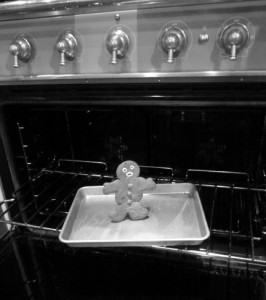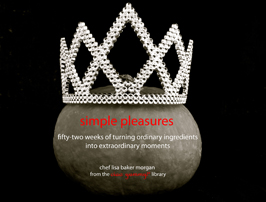
gingerbread dolls
The holidays are a time when parents take multi-tasking to all new levels. I have children myself so I am no exception. In fact, I became very aware of my parental multi-tasking when during a lunchtime run I simultaneously collected mulberry tree trimmings for garland and table decor, planned dinner menus and organized their execution in my head while at the same time listened to Selena Gomez (just to stay current on the music my children are listening to). A woman, walking her dog, stared at me and her gaze made me conscious of how absurd I looked running with my large collection of mulberry branches in each hand, singing Selena Gomez songs. The explanation “I’m a mom” immediately spilled from my mouth and she laughed. She understood. It is the final push before winter break and parents are scrambling to get everything done for the holidays before the children are home needing projects to do. I have an answer to both (at least for one afternoon): gingerbread dolls. An edible version of paper dolls, this project gives you your gingerbread for the holidays and the kids a project too.
While you can buy gingerbread kits in the stores, I have yet to find one that actually tastes good. These gingerbread cookies are chewy and moist, crisp around the edges, spicy, but not too much, and hold their shape for decorating. The recipe is simple and written with children in mind. Instead of creaming the eggs and the butter, this basically uses a one step method (you can use a stand alone mixer or a food processor) which makes it not only easy for children but “child-proofs” the tendency to over-cream the sugar and butter, which causes the cookies to spread. I have included two recipes: one written for adults (below); and the second written (with pictures) that a beginning reader can follow.
Once the cookies are made, rolled fondant is used to make the clothes. Fondant can be purchased online and at cake supply stores and well as craft stores. You can purchase it in a variety of colors but white can be easily colored by adding food coloring. Although there is a fondant rolling pin it is not necessary for this project. If the fondant is sticking simply use a little powdered sugar on your hands and rolling pin. A pie cutter, a dull knife, kitchen scissors (or even a plastic play-dough cutter) can be used to tailor the clothing. Spices, sprinkles and candies make nice accessories but let your child’s imagination be their guide. Use royal icing (recipe posted) to adhere the clothing to the cookies or if the fondant dries the clothes will come off of the cookie (which can be good too if your cookie is a fashionista and wants to change her clothes).
A couple of notes on the ingredients. This recipe uses both dark muscovado sugar and dark brown sugar. Muscovado is unrefined sugar made from sugarcane juice which has a high molasses content. It is a wonderfully spicy, moist and aromatic. It adds a richness to the cookies that dark brown sugar alone cannot give you. It also has small, dark bits of molasses-sugar which adds character in appearance and taste (all gingerbread should have freckles as well as laugh-lines). You can crush them for a more uniform look but the small bits do not affect the cookie adversely unless they are too big. Do not use muscovado sugar exclusively for cookies or they will be too spicy. You can eliminate it and use only dark brown sugar; however, do not use light brown sugar or the cookies will be plain and uninteresting (in taste and appearance).
Make sure your butter is room temperature (which means it is pliable but not too soft). Cut it into chunks because you want to make sure it is incorporated with the other ingredients.
Molasses is the ingredient which gives gingerbread its character. Molasses is the liquid byproduct of boiling sugarcane until the sucrose crystalizes to create granulated sugar. There are three grades of molasses and the difference lies in which boiling (the first, the second, or the third) produced the molasses. All grades can be sulphured or unsulphured. Light molasses is produced from the first boiling, dark molasses from the second, and blackstrap from the third boiling. The molasses I recommend using for these cookies is Grandma’s original unsulphured molasses (yes, the very same one our parents used when we were kids). I have tried several, the organic ones, the darker molasses, and blackstrap, and while I use these others for spice cakes, they are too spicy for cookies.
Lastly, under-bake the cookies to achieve a chewy consistency. When small cracks in the cookies begin to form, take the cookies out of the oven and let the carry-over heat from the baking pan continue to bake the cookies for about 2-3 minutes. Then place the cookies on a metal rack to cool. If you want crisp cookies, bake them longer, roll them flatter, and/or reduce the oven temperature slightly. Store the cookies in an air-tight container for freshness and they should last a few days (assuming they are not eaten before then).
Simple. Delicious. Project!
Je vous souhaite un bon appétit !
LM





